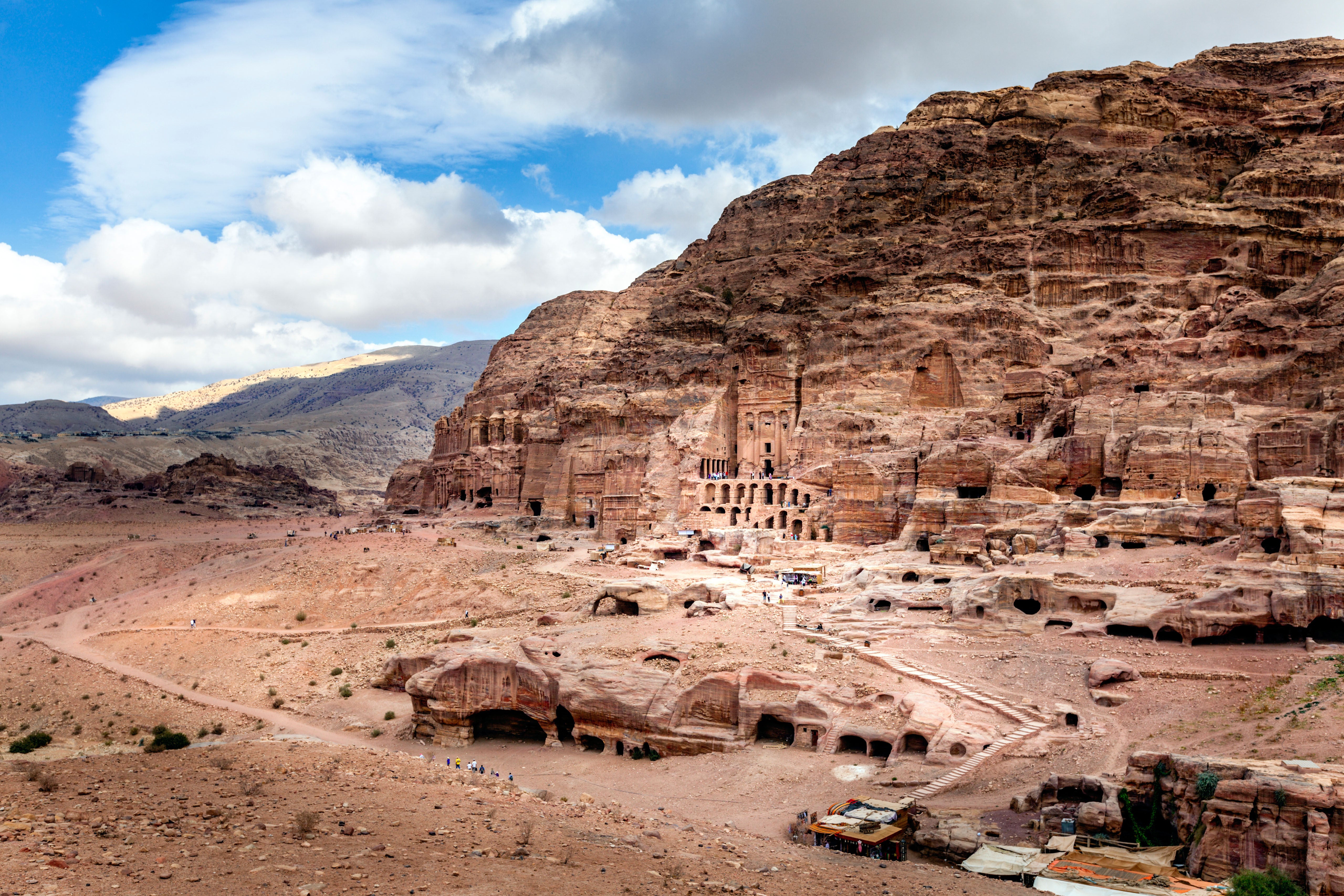Jewels of Jordan: The legendary tourist sites to visit on a first-time trip
Watching the sun slowly set in Wadi Rum, the craggy desertscape takes on a whole new wonder. The red rocks glow golden for a moment, bathed in the final rays of the day, and the wind gently swirls the burnt orange sand at our feet. As the colour seeps out of the day and the temperature drops, an endless array of stars appear in the vast dark sky.
Later that night, we gazed at these constellations through the transparent ceiling on our tents at the Bubble Luxotel, where even indoors you feel completely immersed in the nature of the desert, before spending a couple of hours stargazing with astronomers at the Rum Sky. These experts from Bedouin communities point out the North Star, Orion and Cassiopeia, as well as setting up telescopes to view other constellations, the moon and planets.
Wadi Rum – a UNESCO World Heritage site since 2011 – is just one of the sites on a tourist’s ‘must-see’ list for Jordan. One of the great charms of this Middle Eastern country for travellers is its size – Jordan is a relatively small country that’s easy to travel around, meaning that you can see several destinations in just one trip. And there are so many cultural gems, ancient historical sites and natural wonders within its borders.

One of the new wonders of the world, the ancient city of Petra tends to be top of most tourists’ lists – and for very good reason. The ‘rose city’ is not only a Unesco World Heritage site but is also considered to be one of the modern seven wonders of the world. Walking along the 1.2km Al Siq canyon through towering cliff walls and seeing the famous Treasury come into sight is a truly magical experience. As the early morning sun lifted the shadows over the elaborately carved rock tombs, we watched the facade turn from a rosy hue to a deep golden before exploring the many caves, tombs and temples that filled the former capital of the Nabataean Kingdom.
There is so much to do at Petra that you really need a couple of days at least to explore. Aside from admiring the Treasury, climbing the 850 steps to the monastery, or perhaps hiking along one of the many trails that surrounds Petra, it’s a good idea to spend some time learning about the history of this architectural wonder. The relatively recently opened Petra Museum takes you back through antiquity to tell the story of the city, with artefacts and information about the Nabataean civilisation and beyond.
A little over three hours’ drive from Petra, the capital city Amman is home to some of the most significant historical sites in the country. Even if you only get a day or two in Amman, take a trip up to the Citadel where you’ll not only enjoy panoramic views of the ‘white city’ (so-called because of the white limestone the buildings are traditionally made from) but you can wander around the majestic Temple of Hercules, the early Islamic Umayyad Palace and a Byzantine church, as well as caves that date back to the Bronze Age.
Then head to the beautifully restored 6,000-seat Roman theatre in downtown Amman, which is thought to have been built in the 2nd century AD and is still used for performances today – thanks to acoustics that have been impressing audiences for hundreds of years.

Just 33km from the capital, the smaller city of Madaba has a unique charm and a rich culture. It’s best known for its intricate mosaics from the Byzantine and Umayyad periods, including the oldest depiction of the Holy Land. This remarkably well preserved mosaic map, dating back to the 6th century AD, is found on the floor in early Byzantine Church of Saint George, and shows places including Jerusalem, Jericho, the Dead Sea and the Jordan River. Visitors can follow a marked tourist route that takes them to the church and up through Hussein bin Ali Street where you’ll be spoilt for choice for mosaics and handicraft shops.

Also in Madaba is Mount Nebo where Moses is believed to have looked out over the Holy Land before his death. It’s Incredible to gaze out over a landscape that will have changed very little since Moses took in the same view thousands of years ago – with the Dead Sea, Bethlehem, Jericho and, on a clear day, even Jerusalem stretching out before you.
My own tour of Jordan ended at the natural marvel that is the Dead Sea. More than 400m below sea level, this is the lowest point on earth, with mineral-rich waters and a salt concentration of around 34 per cent – an incredible 10 times more than the water in the world’s oceans. This means that you float effortlessly, while your body soaks in water rich in chloride salts of magnesium, sodium, potassium and bromine, to name just a few. For the full Dead Sea experience, slather your body in the dark soft mud from the sea bed and let it dry in the Jordan sunshine, before rinsing in the sea. It’s the perfect end to a journey discovering the jewels of this beautiful country.
To book your own adventure, Explore Worldwide’s eight-night Jordan Discovery tour spends two full days exploring the tombs and temples of Petra, spends a night in a tented camp in Wadi Rum and discovers Jerash, Amman, the Dead Sea and the Red Sea.




